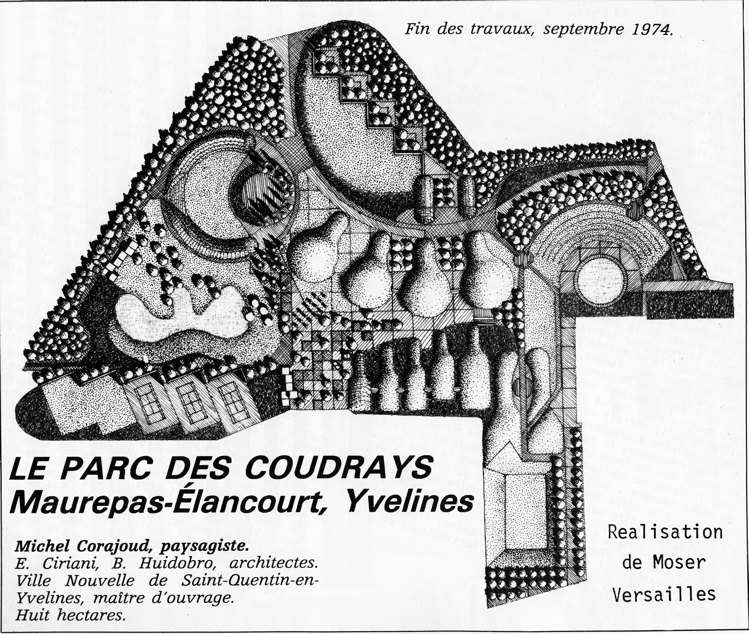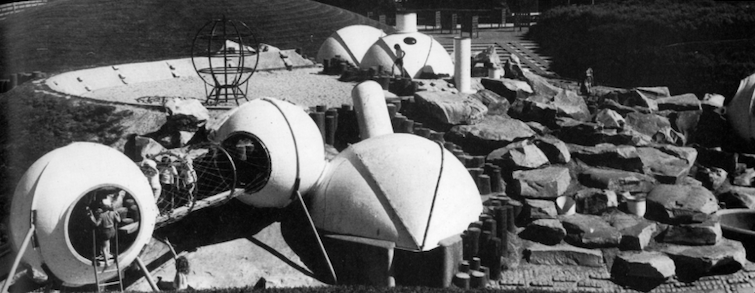Group Ludic, gegr. 1968, Paris, Frankreich
Gründungsmitglieder von Group(e) Ludic:
– Simon Koszel (Warschau, 1939-2018): Architekt, Landschaftsarchitekt, Photograph, Filmer
– David Roditi (geb. 1937 in Manchester : Architekt, Modedesigner, Erforscher neuer Materialien und Strukturen (z.B. Fuller)
– Xavier de la Salle (Brest, 1938-2019): Bildhauer, Politik- und Wirtschaftswissenschaftler
Xavier de la Salle: „A la Ve Biennale de Paris (1967), le sculpteur David Roditi exposait L’élément Plein de Jeu No. 1 (Polyeuréthane, recouvert de Polyester armé et coloré dans la masse. Les enfants peuvent modifier l’organisation de la structure). Comme je réalisais des sculptures pour les enfants, il nous a semblé utile d’associer dans une même recherche deux tempéraments très opposés, ce qui laissait à chacun sa propre personnalité, et permettait cependant de trouver une grande variété de formes, malgré les impératifs du problème posé.[…]“
Simon Koszel, David Roditi und Xavier de la Salle treffen sich im kreativen Umfeld der Ereignisse vom Mai 1968. Zu dieser Zeit gibt es in Paris kaum interessante Spielmöglichkeiten. In den Stadtparks ist gar das Betreten des Rasens verboten, woraufhin sich Roditi beim Sportministerium beschwert. Er wird an die Organisatoren der Ferienkolonien verwiesen, die sich für neue Spielgeräte interessieren. Roditi stürzt sich zusammen mit de la Salle und Koszel in die Produktion von Prototypen.
„L’experimentation immédiate des prototypes fut facilités par le fait que David Roditi habitait à l’époque sur une péniche amarré quai des Tuileries: au fur et à mesure de leur production, les éléments laissés sur le quai étaient appropriés par les passants et mis à l’épreuve. Cette utilisation immédiate permettait de modifier à la demande les prototypes en fonction des vices de conception décelés“ (in: Xavier de la Salle, p. 20)
Auf einem Kongress der Kleinkinderbetreuerinnen lernen sie Fernand Nathan kennen, Eigentümer des Verlagshauses Nathan. Inspiriert vom Children’s Creative Center der Expo 67 in Montreal, sucht Nathan nach neuen Spielgeräten. Fortan unterstützt er die Arbeit der drei Designer.
1968 realisiert Group Ludic eine erste Spiellandschaft in einer Feriensiedlung in Royan an der Atlantikküste: ein im Sand vergrabenes U-Boot („Les pins de Cordouan“ in Royan (1968) („sous-marin“). Als Ausgangsmaterial greifen sie auf Abfallprodukte der Industrie zurück. Für die Satellitenstadt Hérouville Saint-Clair bei Caën bauen sie eine Art Kinderstadt mit futuristisch anmutenden Kugeln, produziert aus ehemaligen Gussformen für Luftballons. 1970 realisiert Group Ludic auf Einladung des Pariser Designzentrums in den alten Pariser Markthallen jouer aux halles, wo sich Kinder während den Sommerferien austoben können.
1972 verlässt David Roditi die Gruppe, später auch Simon Koszel. Xavier de la Salle realisiert bis in die frühen 1990er Jahre Spielaktionen. Doch das soziale Klima in den französischen Großsiedlungen verschlechtert sich zunehmend, Drogenkonsum und Jugendkriminalität nehmen zu, weshalb sich de la Salle zurückzieht.
Group Ludic, formed 1968, Paris, France
Simon Koszel, David Roditi, and Xavier de la Salle meet in the inspirational atmosphere surrounding the events of May 1968. At the time there are hardly any interesting places for children to play in Paris; the city even prohibits people walking on the grass in the public parks. Roditi contacts the Sports Ministry to complain. The bureau directs him towards the organizers of the youth holiday camps, who are interested in new playground equipment. Roditi, de la Salle, and Koszel throw themselves into the production of prototypes. At a congress for preschool teachers, they meet the publisher Fernand Nathan. Inspired by the Children’s Creative Center at Expo 67 in Montreal and looking for new playground equipment, Nathan begins to support the work of the three designers.
In 1968 Group Ludic realize their first playground in a holiday resort in Royan on the Atlantic coast – a submarine buried in sand, made of recycled industrial materials. For the newly founded town of Hérouville Saint-Clair outside of Caën, they build a children’s play city with futuristic spheres made from former balloon molds. In 1970 Group Ludic is commissioned by the Industrial Design Center to design a play environment in the old “Halles de Paris”. The exhibition jouer aux halles is open to children during the summer vacation.
In 1972 Roditi leaves the group, followed later by Koszel. De la Salle continues to realize play structures
until the early 1990s. As the social climate in the large housing projects worsens, and drug consumption and juvenile crime increases, de la Salle quits as well.
List of projects (not complete)
„Sous-marin“, Les Mathes / La Palmyre – Village de vacances des Pins de Cordouan, Royan, 1969
Les logis du Clapet, Royan, 1969
Quarter “La Grande Delle” (ZUP – ville nouvelle), Hérouville-Saint- Clair, 1969
Rue de Boucry, Paris, 1969
Lozari V.V.F., Corsica, 1970
Anglet V.V.F., France, 1970
“La Grande Motte” V.V.F., 1969-1970
Rembrandt Park, Amsterdam, commission De Bijenkorf, 1970
Park Blijdorp, Rotterdam, commission De Bijenkorf, 1970
playground Eindhoven, commission De Bijenkorf, 1970
Zuiderpark, Den Haag, commission De Bijenkorf, 1970
Z.U.P. de Caucriauville, Le Havre (Normandie), 1970
Les Halles, Paris, exhibition Centre de Création Industrielle (CCI), 1970
Biarritz, Le Grand Large, Hotel vacances Capricel, 1970
Jardin d’acclimatation, Bois de Boulogne, Paris, 1971
Chalon-sur-Saône (Burgund/ Bourgogne), place d’aventure/ adventure playground, 1972
Biguglia (Corse), V.V.F., 1972
Workshops, Foyer Rémois („Société Anonyme d’Habitations à Bon Marché“), Reims, 1973
ZUP St-Jean des Vignes, Chalon-sur-Saône, 1973
Parc des Coudrais, Elancourt, 1974
Algarve, Portugal
ZUP de Grenoble
Ville nouvelle de Trappes
Année Internationale de l’enfance, Jardin des Plantes, Paris, 1979
V.V.F. = Village Vacances Famille
Z.U.P. = Zone à urbaniser en priorité
Blog: cartes postales Group Ludic
Quellen:
Plans d’éxécution d’ouvrages divers d’aménagements extérieurs / dessiné par Simon Koszel, éd. et présenté par Jacques Simon. Turny : [Espaces verts] ; [19–].. 110 p. : tout en ill.. (Aménagement des espaces libres ; No 15) [003912807]
Xavier de La Salle, Espaces de jeux, espace de vie, [Paris]: Dunod, 1982, 118 p , ill.
Group Ludic: „aire de jeux: espace de libre connaissance“ in: l’architecture d’aujourd’hui, No. 154 – février/ mars 1971 (l’architecture et l’enfance), Paris, pp. 80-84.
Images
Courtesy Xavier de la Salle
update: 7.5.2012; September 15, 2013; December 26, 2019

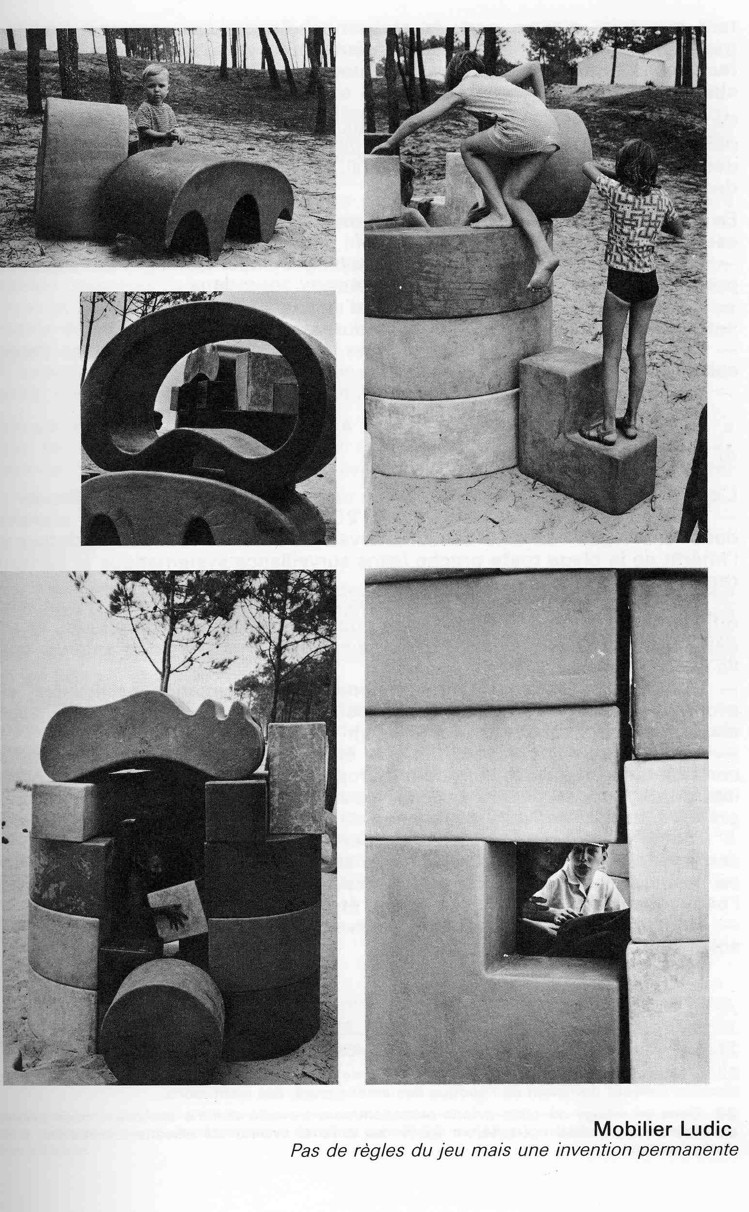
Formes mobiles
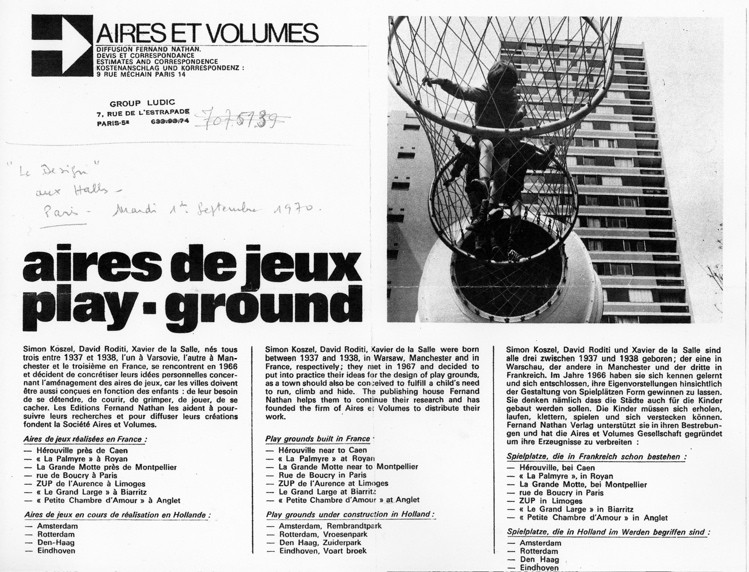
Merci à archipostcard.blogspot.com !

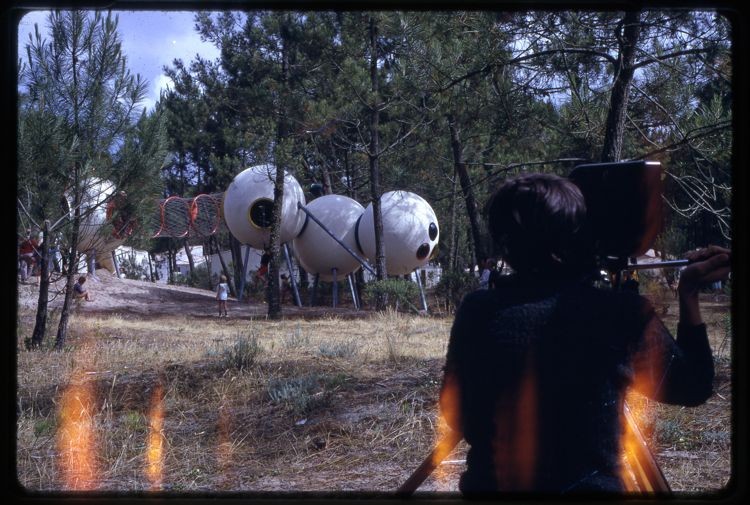
Les gites du Clapet, Royan, France, 1969
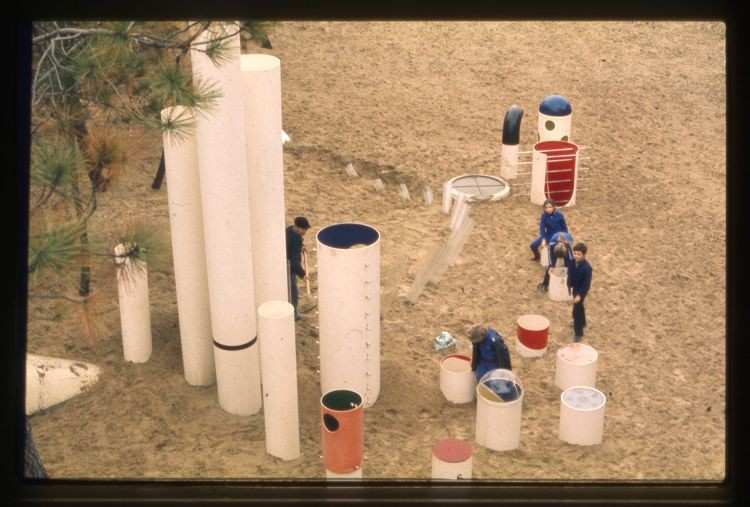
„Submarine“, Les Pins de Corduan, Royan, France, 1969
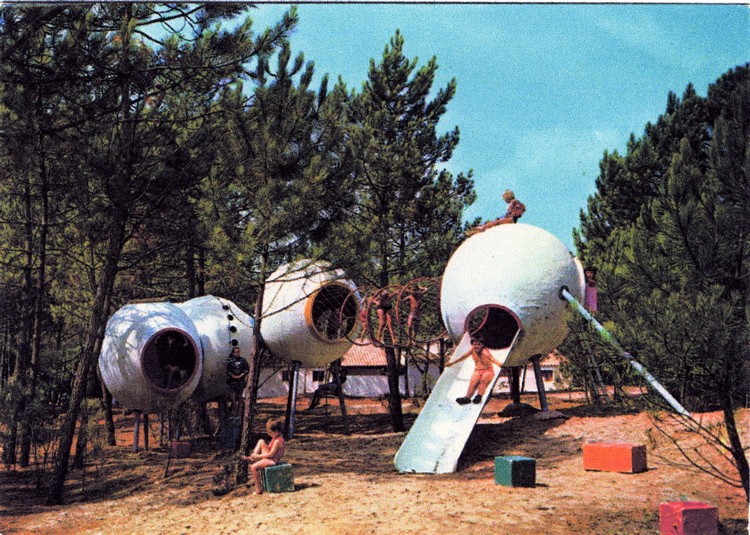
Logis du Clapet, Royan, 1969


source: Xavier de La Salle, Espaces de jeux, espace de vie, 1982
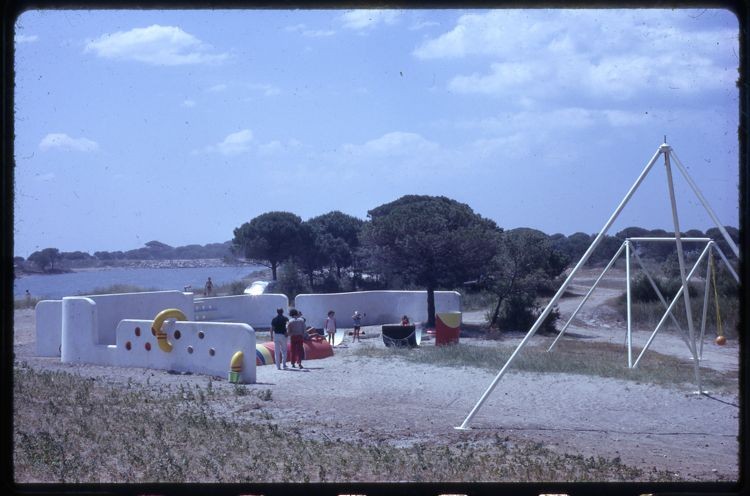
Playground for “La Grande Motte”, family holiday resort, France, 1970
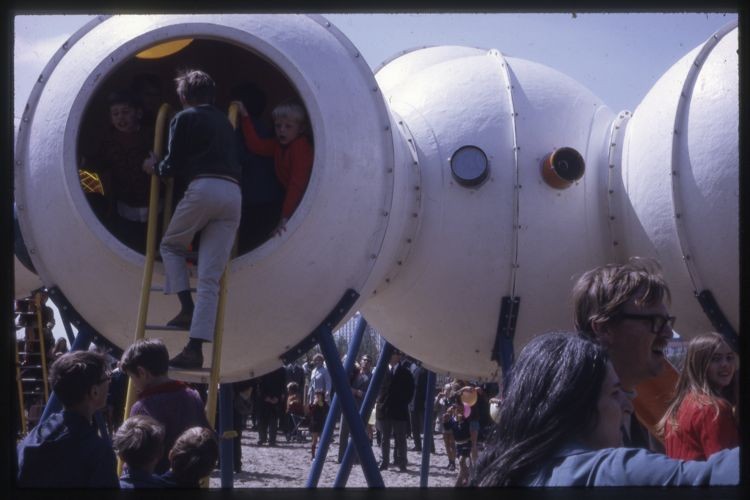
Rembrandt Park, Amsterdam, 1970
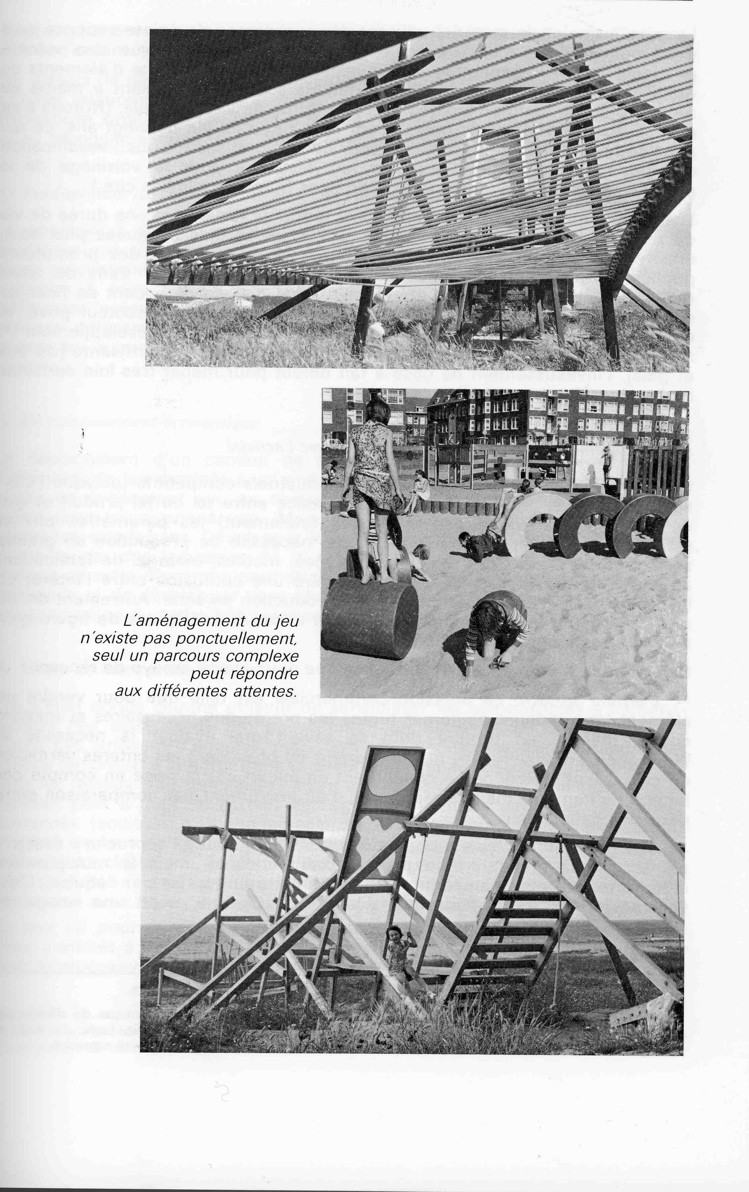
Lozari (Corse), 1970

Indoor playground in Les Halles, Paris, 1970 (Commission CCI)
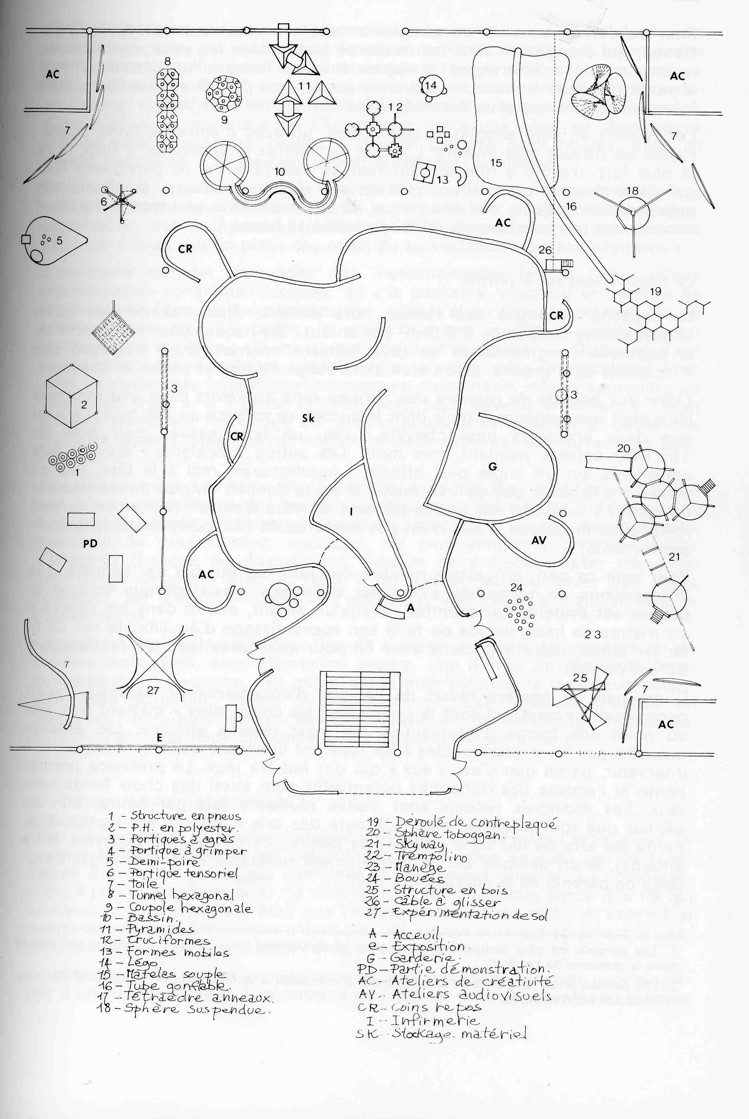
Halles de Baltard, Paris, exposition du Centre de Création Industrielle CCI, 1970
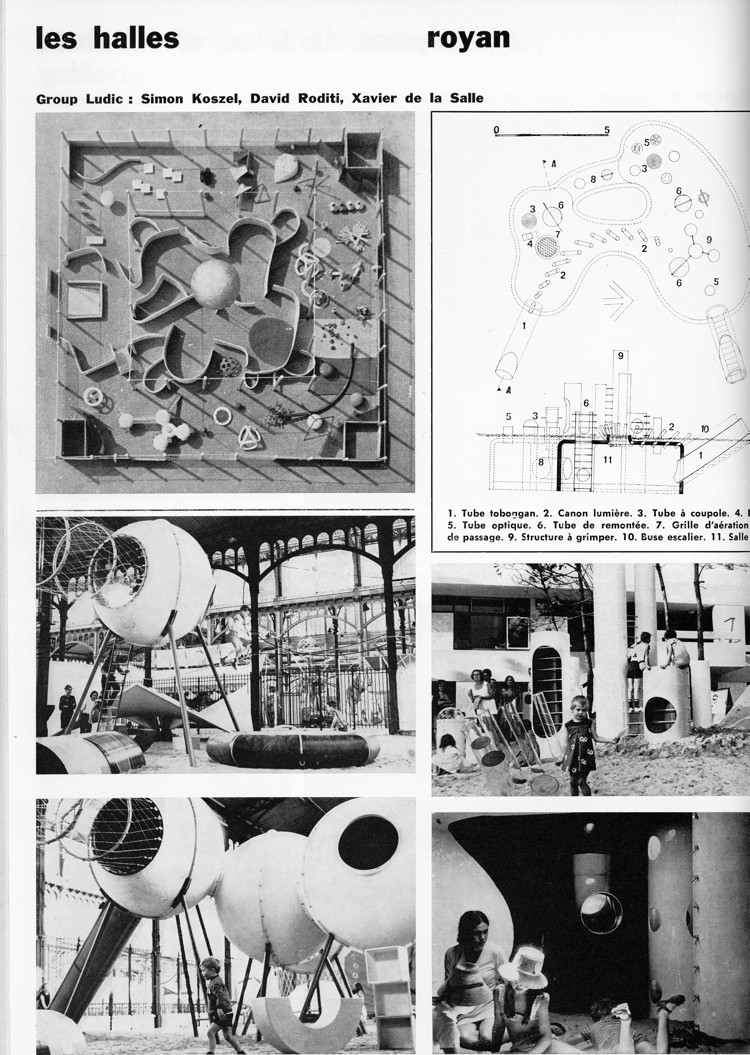
Les Halles (l), Royan (r), l’architecture d’aujourd’hui, 1971
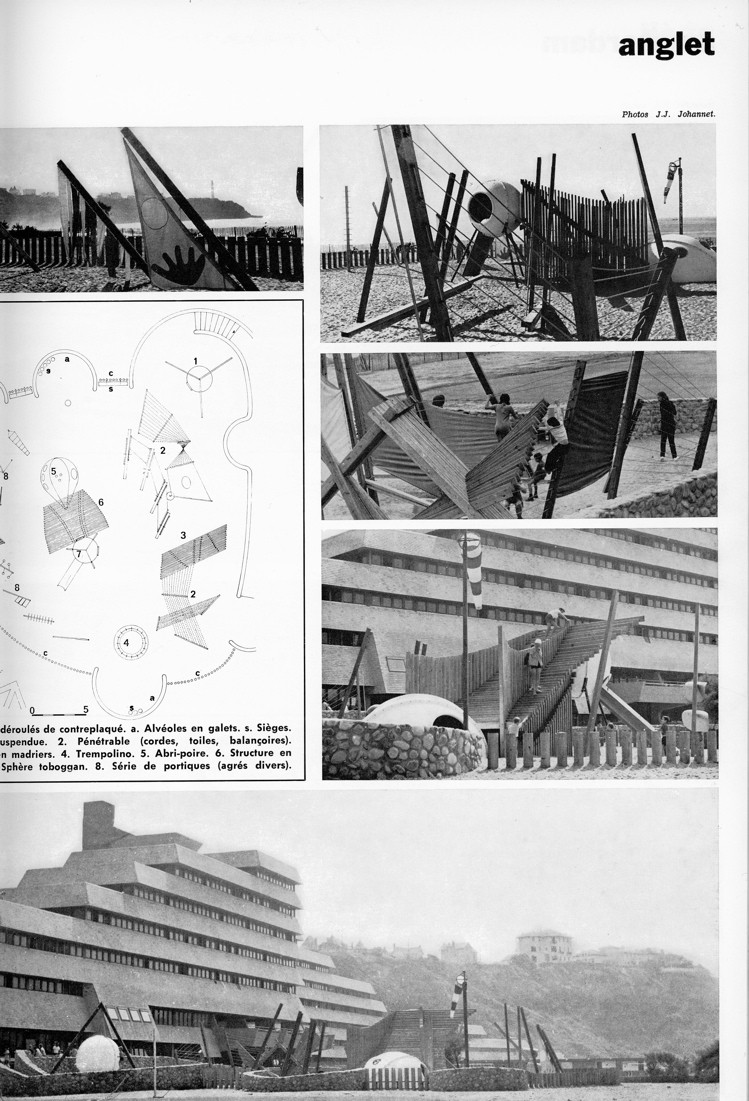
Anglet (1970), l’architecture d’aujourd’hui, 1971
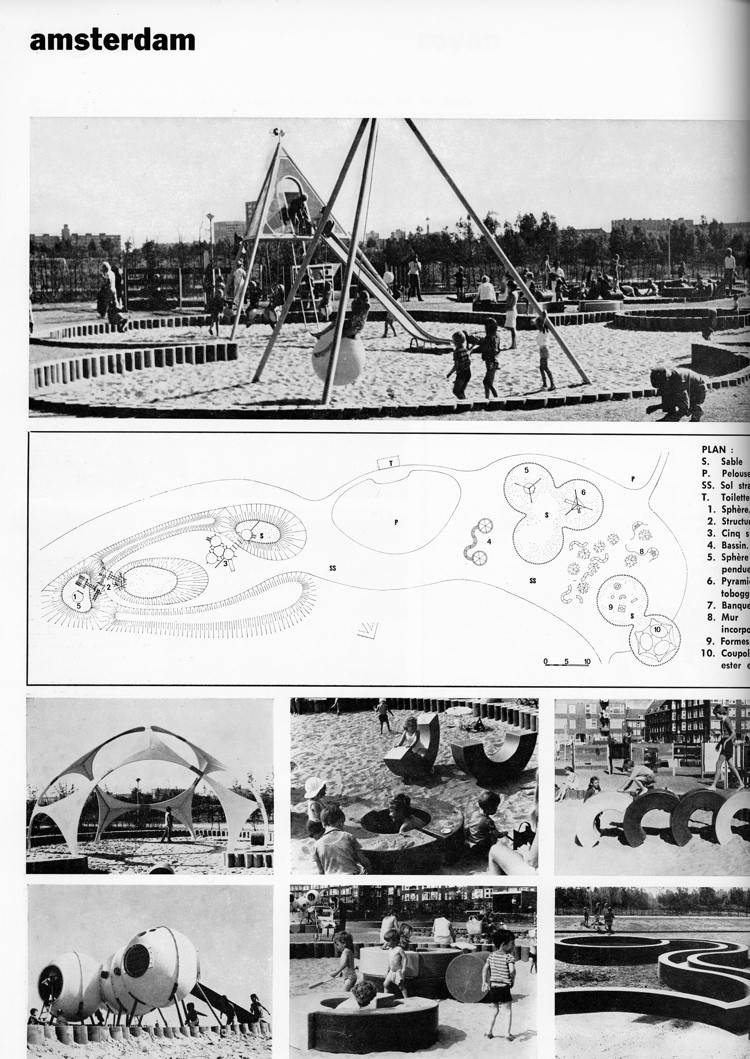
Rembrandt Park, Amsterdam, 1970, l’architecture d’aujourd’hui, 1971

Liège, tiré de l’architecture d’aujourd’hui, 1971
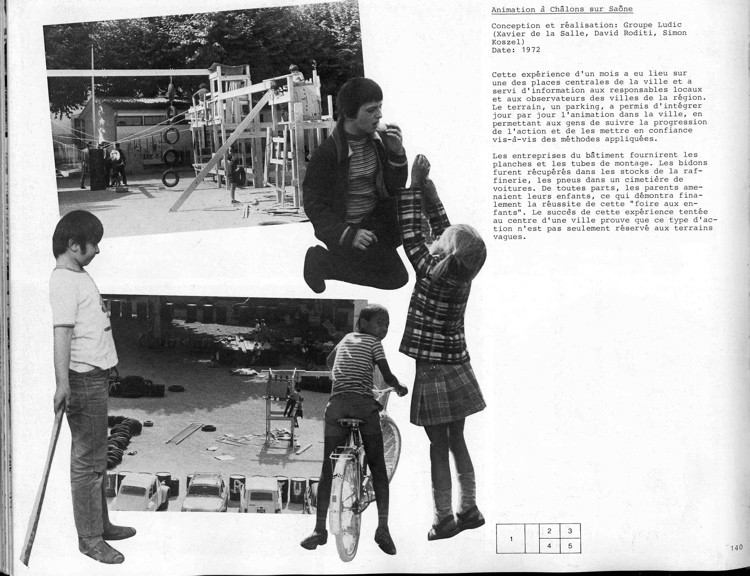
Chalon-sur-Saône, 1972, Rouard/ Simon (1976)
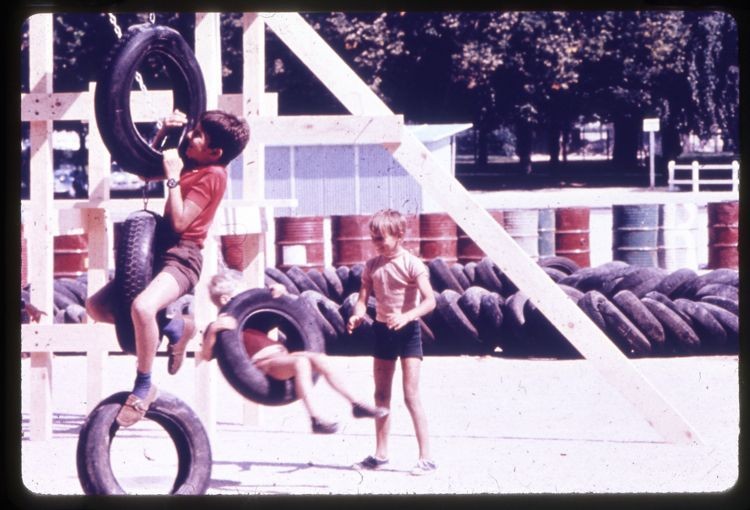
„Animation Opération Zumaki“, Chalon-sur-Saône, 1972

building workshop for children, “Foyer Rémois,” Reims, France 1973

Cité les Prés Saint-Jean, Chalon-sur-Saône, 1973

